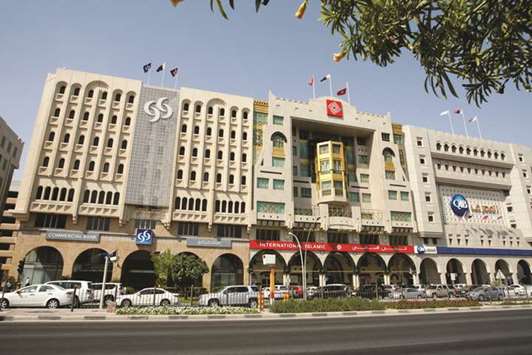Total listed banking sector assets in Qatar increased by 8.1% to $389.4bn in 2017 from $360.2bn in 2016, driven by growth in corporate lending, cash and equivalents and investment securities, a new report has shown.
This, according to KPMG, was the “highest” asset growth rate among all Gulf Co-operation Council countries last year.
This growth can be predominantly attributed to the increase in financing asset balances (70%) and higher investment securities (15%).
In its ‘GCC Listed Banks Results’ report, KPMG said the market is dominated by QNB, which had a market share of 56.3% of total listed banking assets at end-2017, up from 2016, while Islamic banks had a combined market share of 20.8%.
In 2017, profitability for listed banks increased by 5% on average from the previous year. This was mainly a result of higher net interest income, which increased by 3.8% and a further reduction in costs, despite a higher impairment charge on loans.
Listed banks in Qatar continue to have some of the lowest cost-to-income ratios (CIR) in the region, KPMG said.
At 29.5%, Qatar’s listed banks have the “lowest” CIR, on average across the GCC, reflecting “cost consciousness” across the sector and the country as a whole.
All except two banks, both in the Islamic sector, reported a decline in their CIRs, which KPMG noted, “helped overall average dip” below 30% for the first time in a number of years.
Banks have continued to invest in short and long-term cost-saving initiatives.
Overall profitability for listed Qatari banks has increased year-on-year by 5%. All banks, except for two, reported an increase in net profit from 2016, with conventional banks outperforming their Islamic counterparts.
This increase can be primarily attributed to higher net interest income and a decrease in costs, which banks continue to focus on and maintain at low levels.
Capital Adequacy Ratios (CARs), for all except two banks are at higher levels when compared with 2016, reflecting the “conservative approach” to business during the year, coupled with the specific capital-raising activities undertaken.
In addition, the regulatory capital adequacy requirements have been, and continue to, increase with the gradual phasing in of Basel III regulations, with the minimum capital adequacy regulatory requirement expected to reach 17% for some banks by 2018.
The report said the Qatar Central Bank takes a “proactive” approach to regulating banks in Qatar. It has issued Basel III regulations for all banks, which have been applied in a phased manner, and has implemented numerous regulatory requirements that have been applied in more developed financial markets, covering areas such as stress testing, capital planning, liquidity management and recovery and resolution planning.
Currently, 18 banks operate under the QCB, of which 11 are national banks. Four of these are Islamic banks.
On the report, Omar Mahmood, head (Financial Services) for KPMG in the Middle East & South Asia, and partner at KPMG in Qatar, said, “Overall it has been a strong year for listed banks in Qatar. While profitability, assets and capital have all increased from the comparative year, banks in Qatar have also managed to reduce costs by 1.9% on average, resulting in a sector cost-to-income ratio of less than 30%, which is the lowest in the region. These positive report findings are particularly impressive, given the unique year for Qatar, both politically and economically, and continue to reflect the resilience of Qatar’s banking sector.”
Mahmood said, “Despite this success banks are still very well aware of the challenges that remain. Impairment charges, non-performing ratios and funding costs have all increased, while liquidity continues to be a key focus area. Banks are therefore reshaping strategies, targeting higher quality domestic assets and looking at diversified funding sources.
“The focus on innovation and efficiency will continue as banks in Qatar look to differentiate themselves in a competitive market, given the funding cost pressures being faced, as well as the increasing regulatory requirements, such as Basel III and IFRS 9. We expect there to be continued control around the cost side of the business to ensure profitable growth remains and cost-to-income ratios are maintained at low levels.”

At 29.5%, Qatar’s listed banks have the u201clowestu201d CIR on average across the GCC. PICTURE: Nasar T K

